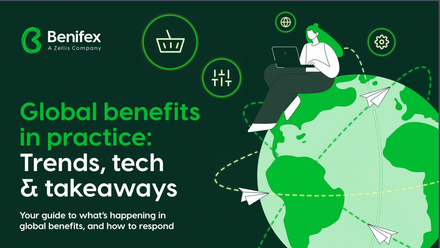Five steps to building a global employee wellbeing strategy

Just like individuals, teams and locations are unique. While this diversity has been shown to enrich companies, benefit employees and positively impact the bottom line, it also makes creating a unified plan that’s equitable and effective across borders and cultures a much bigger task.
For maximum inclusivity and accessibility, consistency must be paired with flexibility. The ethics, values and intentions that underpin an organisation’s global wellbeing strategy must remain the same across all locations. The design and implementation, however, must be flexible to be equitable and effective in different geographies.
On salaries and benefits across regions
Location is a necessary piece of the equation for equity and in some areas, employees will need significantly more income to thrive. When it comes to benefits, local laws and regulations, as well as cultural expectations, must also be carefully considered. At Koa, all of our teams receive food expense budgets and comprehensive health coverage, but how each local programme works varies depending on cultural norms and legal requirements in situ.
Steps to building a global employee wellbeing strategy
1. Define what wellbeing means for your organisation
To design an effective wellbeing strategy, you’ll need to be clear on what wellbeing means at your workplace. Is wellbeing certain levels of engagement and productivity? Or are employee trust and open dialogue what really matters? Are you more concerned with a certain type of wellbeing, ie, physical, mental or even financial?
2. Gauge where your employees need and want support
To design a strategy that works across your entire organisation, you’ll need to know where you are today. Regular check-ins on your staff’s wellbeing and engagement are useful. Confidential surveys can help ascertain where people would like to receive additional support. Open lines of communication are key, as is 24h response, while anonymous weekly, quarterly engagement surveys and monthly wellbeing surveys help keep track of how employees are feeling.
3. Identify and implement key priorities
Next to choose a few critical actions to prioritise in the short-term. Did a majority of staff request more accessible mental health support? Teletherapy and app-based wellbeing that can be made immediately available to employees could be a good place to start. By tackling easy-to-implement tasks first, you make it clear to your team that you’re taking action based on their feedback. More complex plans can be saved for the medium to long term.
4. Promote and measure your initiatives
Communication about your wellbeing initiatives should always be two-way. Make sure your organisation is both regularly promoting the wellbeing benefits available to employees and making room for employees to share their reactions. Keep track of uptake and engagement numbers with new initiatives and put a system in place to get more qualitative feedback. At Koa, we receive rich data on how our team is feeling about wellbeing benefits through Q and A sessions and a dedicated messaging channel.
5. Course-correct as needed
Over time, the specific tools and benefits your employees need to flourish at work will change. Global organisations will also need to work hard to be aware of shifting needs at different locations. Companies will need to be flexible and responsive in their approach.
A successful workplace wellbeing strategy helps you look after your employees and your business interests. When your employees feel supported, they’re not just happier and healthier – they’re also more engaged and productive and less likely to leave.
Find out more on the role of mental wellbeing in becoming a workplace people don’t want to leave in our Guide to attracting and retaining talent.
Author is Noreen O’Prey, global people and culture lead at Koa Health.
This article was supplied by Koa Health.
Supplied by REBA Associate Member, Koa Health
At Koa Health, we believe digital mental health solutions are the answer to mental health issues.







